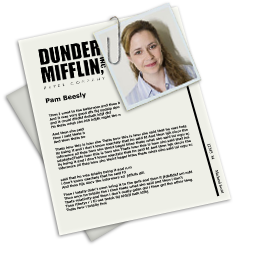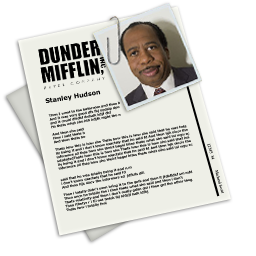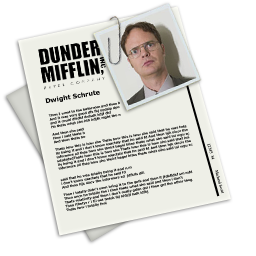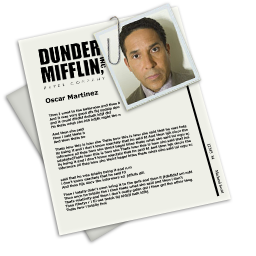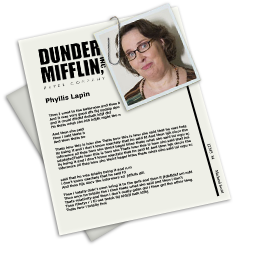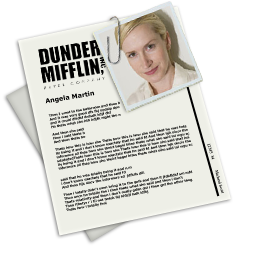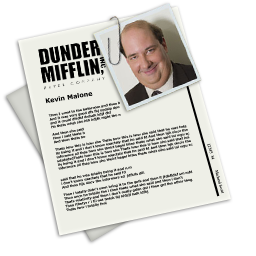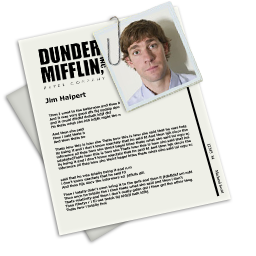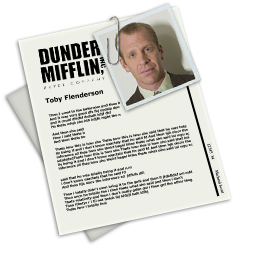The Economics of The Office
Learning economics from the world's best boss
Schrute Bucks
In this clip Dwight attempts to use the motivational tool of Schrute Bucks to keep his employees motivated. The problem is even though his “money” is somewhat similar to a dollar in that it has no intrinsic value it also does not have any real buying power. It is not accepted as a good unit of account or a good store of value. This is a good opportunity to talk about the functions of money with a class.
Schrute Bucks Counterfeits
In this scene Creed threatens to devalue Dwight’s currency. This has occurred in Zimbabwe recently and in Germany after World War I just to cite a couple of famous examples.
Broke
Using this clip as a starting point, we can demonstrate and discuss the difference between fixed costs and variable costs.
Dunder Mifflin Infinity
In this clip (from deleted scenes) we can demonstrate a good example of structural unemployment. Due to an advance in technology the skills of the Dunder Mifflin accountants will no longer be needed. Obviously from here students may want to discuss cyclical and frictional unemployment (which can be demonstrated when Michael foolishly quits his job with no real plan for his job search in season five).
Season 4 Episode 3 "Dunder Mifflin Infinity"
Babysitter
In this clip, Jim and Pam discuss how difficult it is to find a good babysitter for their kids. They are only willing to hire a babysitter with highly specialized skills. Therefore, they should be expected to pay a premium price for a sitter. It's not that there is a shortage of available babysitters as much as there is a shortage of sitter who have demonstrated the skill set they think is required.
Season 4 Episode 3 "Andy's Play"
Information and Market Efficiency (G14) Microeconomic Behavior: Underlying Principles (D01)
Flowers
In this clip, Michael tries to buy flowers only to discover how expensive they are. This is a good example of the relationship between price elasticity of demand and the availability of substitute goods. Also we see that when the price of a good is above someone's reservation price, they will either go without the good or purchase a substitute good.
Season 4 Episode 3 "Andy's Play"
Microeconomic Behavior: Underlying Principles (D01) Market Structure and Pricing (D40)
Jacket
Kevin buys a jacket. Students should be able to demonstrate that putting Kevin's name on the jacket shifted his demand curve for this good to the right.
Season 4 Episode 3 "Andy's Play"
Landlord Dwight
When Dwight becomes the office's landlord he sets up a coffee shop in the foyer and installs motion sensors on the lights. Dwight is able to charge high prices in the coffee shop because its location gives him monopoly power. His efforts to cut costs are an example of incentives at work.
Microeconomic Behavior: Underlying Principles (D01) Production and Cost (D24) Monopoly (D42)
Conflict Resolution Part 1
In this clip, Michael attempts to resolve a conflict between Oscar and Angela. One application of this clip is to reiterate the idea that voluntary trade results in a "win win" situation. This clip also can be used when showing outcomes on an aggregate supply/aggregate demand framework. When we have a major increase in aggregate supply (something like the IT revolution in the 1990's) it results in lower levels of inflation and unemployment or a "win win" outcome. (maybe even win, win, win!)
Season 2 Episode 21 "Conflict Resolution"
Inflation (E31) Unemployment (J60) Trade (F10) Macroeconomic Models (E10)
Conflict Resolution Part 2
Similar to the applications in Part 1, the "win lose" outcome in this clip can be used to talk about the expected trade off between inflation and unemployment when many polices are implemented.
Season 2 Episode 21 "Conflict Resolution"
Inflation (E31) Unemployment (J60) Macroeconomic Policy (E60)
